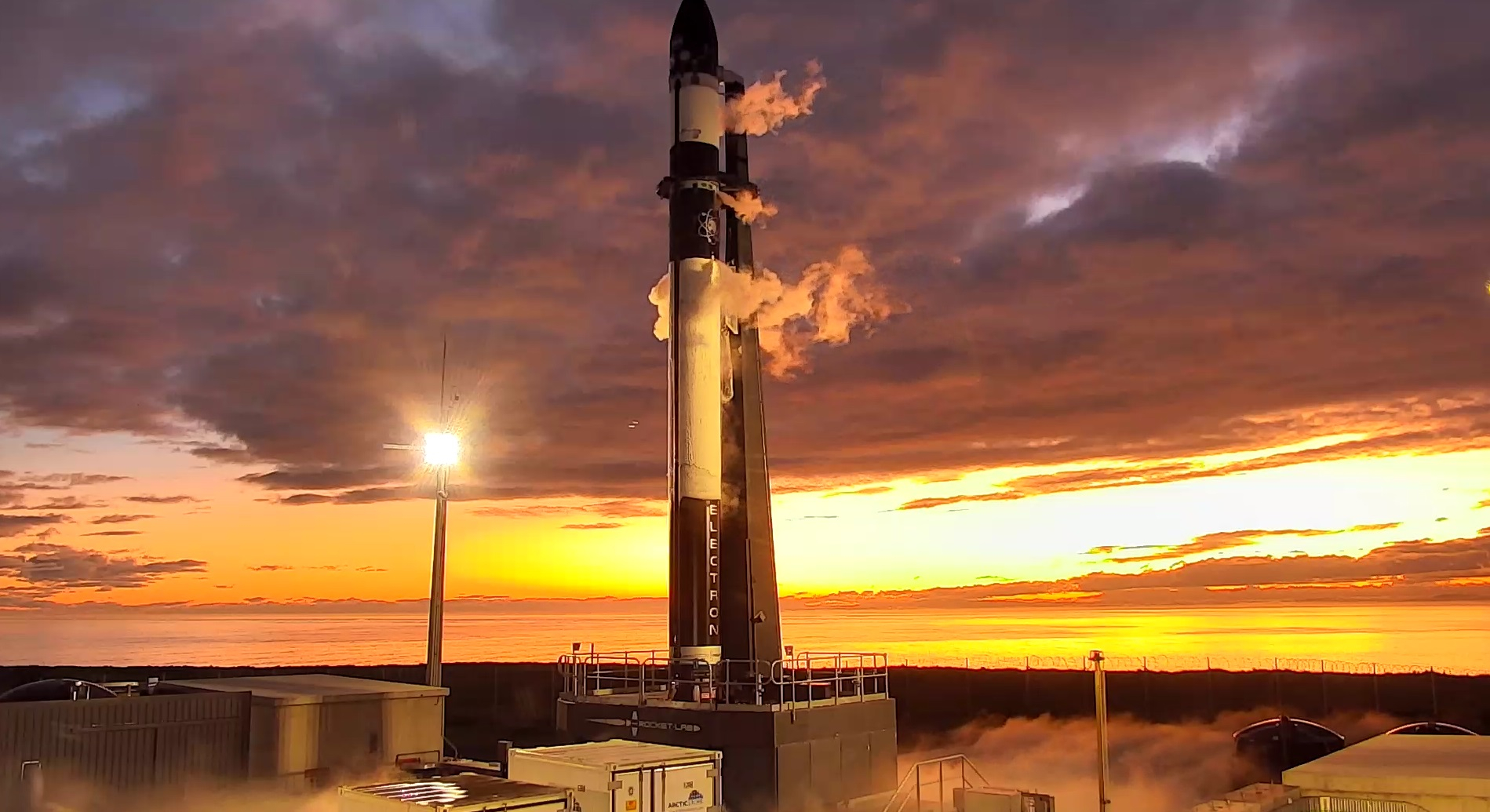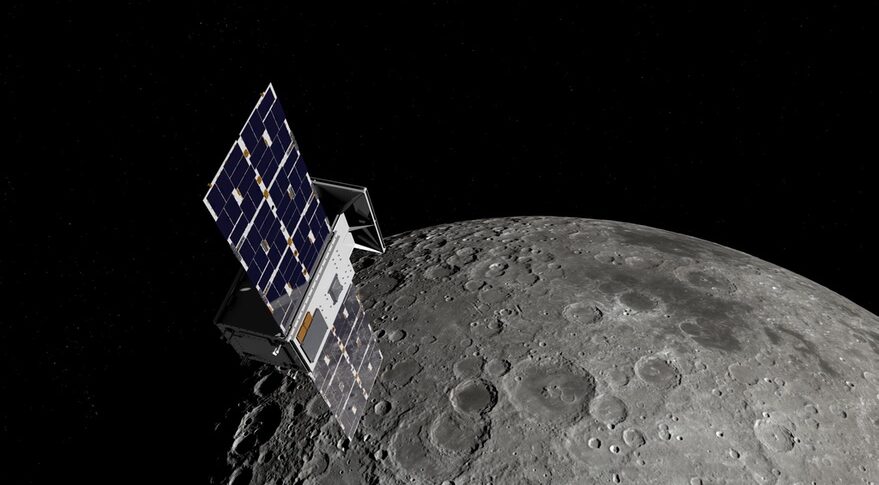
One Step Closer To Rocket Lab’s Moon Mission
The demand for launch services is already high and is only expected to grow significantly in the coming years. Companies like Rocket Lab are preparing by working on existing launch vehicles such as Electron and rockets of the future including Neutron. This process also involves sending payloads far beyond the typical low Earth orbit mission.
Expected to happen only a few weeks from now, Rocket Lab will use an Electron rocket paired with a Photon spacecraft to reach the Moon. This long awaited mission is meant to mark a big milestone for the company as they work towards even more ambitious missions in the future. Most recently Rocket Lab announced that CAPSTONE has arrived at Launch Complex 1.
There are a lot of steps before this launch takes place in late May to early June. This especially is the case because of the partnership with NASA and a long list of other companies working to make this mission a success. Here I will go more in-depth into the most recent updates from Rocket Lab, news from NASA, and an overview of what to expect in the coming weeks.
Recent Updates

With the launch set to happen in only a few weeks, everyone involved including Rocket Lab is very busy preparing for the mission. This can clearly be seen through the multiple updates provided by the company in the past few days. Specifically, just yesterday Rocket Lab CEO Peter Beck tweeted saying, “Wet dress rehearsal completed for the upcoming launch. Next stop…..the Moon! I always wanted to say that.” This tweet included a photo of Electron completing the wet dress rehearsal. Not only this, but Rocket Lab also provided some valuable updates on the mission. Yesterday, they tweeted saying, “CAPSTONE has arrived at Launch Complex 1, the launch rehearsal is complete, and payload integration is about to begin. You know what that means – it’s almost time to go to the Moon!” It looks as if everything is coming together as intended with the approach of the launch date. “CAPSTONE’s arrival at Launch Complex 1 marks a major milestone in this historic mission. We’re excited to move into the final integration and test phase ahead of launch day,” said Rocket Lab founder and CEO, Peter Beck. “This is our most ambitious Photon mission yet and a significant step toward providing scientific missions with dedicated and affordable access to interplanetary orbits. Less than four years after our first Electron mission for NASA, it’s fantastic to be working with the agency and its partners again to go beyond low Earth orbit and pave the way for humanity’s return to the Moon.”
To be more specific, on May 16th, Rocket Lab announced that the CAPSTONE spacecraft has arrived at Rocket Lab Launch Complex 1 in Mahia, New Zealand in preparation for launch to lunar orbit. With the spacecraft now at the launch site, Rocket Lab will begin payload integration with the Electron rocket and Photon spacecraft bus ahead of the launch window opening on May 31. Designed and built by Tyvak Nano-Satellite Systems, a Terran Orbital Corporation, and owned and operated by Advanced Space, the Cislunar Autonomous Positioning System Technology Operations and Navigation Experiment (CAPSTONE) CubeSat will be the first spacecraft to test the Near Rectilinear Halo Orbit (NRHO) around the Moon. Researchers expect this orbit to be a gravitational sweet spot in space. Here, the pull of gravity from Earth and the Moon interact to allow for a nearly-stable orbit – allowing physics to do most of the work of keeping a spacecraft in orbit around the Moon. NASA has big plans for this unique type of orbit. The agency hopes to park bigger spacecraft – including the lunar-orbiting space station Gateway – in an NRHO around the Moon, providing astronauts with a base from which to descend to the lunar surface as part of the Artemis program. In addition to Rocket Lab’s progress over the past few days, NASA has also been preparing for the mission.
CAPSTONE

Now that we know what companies such as Rocket Lab have been up to regarding the upcoming mission, we can take a closer look at CAPSTONE and the mission to the Moon. CAPSTONE will be launched to an initial low Earth orbit by Rocket Lab’s Electron launch vehicle and then placed on a ballistic lunar transfer by Rocket Lab’s Lunar Photon spacecraft bus. Unlike the Apollo lunar missions of the 1960s and 70s, which took a free return trajectory to the Moon, this fuel efficient ballistic lunar transfer makes it possible to deploy CAPSTONE to such a distant orbit using a small launch vehicle. Standing at just 59 feet tall, Electron is the smallest rocket to attempt a launch to the Moon. Around ten minutes after lift-off on Electron, Rocket Lab’s Lunar Photon spacecraft bus, with CAPSTONE attached, will separate from the rocket and carry out a series of orbit raising maneuvers, stretching its orbit into a prominent ellipse around Earth. About six days after launch, a final burn from Photon’s 3D printed HyperCurie engine will accelerate Photon to 24,500 miles per hour, enabling it to escape low-Earth orbit and set CAPSTONE on a course for the Moon. Within 20 minutes of the final burn, Photon will release CAPSTONE into space for the first leg of the CubeSat’s solo flight. CAPSTONE’s journey to NRHO is expected to take around four months from this point. Once successfully inserted into the orbit, CAPSTONE is expected to remain there for at least six months, allowing NASA to study the orbit dynamics.
Altogether, Rocket Lab has carried out 26 Electron launches since 2017, but the CAPSTONE mission will be Rocket Lab’s first launch beyond low Earth orbit. Rocket Lab also operates two Photon spacecraft in low Earth orbit, but the CAPSTONE mission is the first to employ the high energy variant of the Photon spacecraft bus, powered by the HyperCurie engine, designed to support lunar and interplanetary missions. CAPSTONE is the first in a series of interplanetary missions for Photon, including the ESCAPADE mission to Mars in 2024 and Rocket Lab’s private mission to Venus in 2023. Focusing back on the payload, a microwave oven–sized CubeSat weighing just 55 pounds will serve as the first spacecraft to test a unique, elliptical lunar orbit as part of CAPSTONE. As a pathfinder for Gateway, a Moon-orbiting outpost that is part of NASA’s Artemis program, CAPSTONE will help reduce risk for future spacecraft by validating innovative navigation technologies and verifying the dynamics of this halo-shaped orbit. After a three-month journey to its target destination, CAPSTONE will orbit this area around the Moon for at least six months to understand the characteristics of the orbit. Specifically, it will validate the power and propulsion requirements for maintaining its orbit as predicted by NASA’s models, reducing logistical uncertainties. It will also demonstrate the reliability of innovative spacecraft-to-spacecraft navigation solutions as well as communication capabilities with Earth. The NRHO provides the advantage of an unobstructed view of Earth in addition to coverage of the lunar South Pole.
To test these new navigation capabilities, CAPSTONE has a second dedicated payload flight computer and radio that will perform calculations to determine where the CubeSat is in its orbital path. Circling the Moon since 2009, NASA’s Lunar Reconnaissance Orbiter (LRO) will serve as a reference point for CAPSTONE. The intention is for CAPSTONE to communicate directly with LRO and utilize the data obtained from this crosslink to measure how far it is from LRO and how fast the distance between the two changes, which in turn determines CAPSTONE’s position in space. This peer-to-peer information will be used to evaluate CAPSTONE’s autonomous navigation software. If successful, this software, referred to as the Cislunar Autonomous Positioning System (CAPS), will allow future spacecraft to determine their location without having to rely exclusively on tracking from Earth. This capability could enable future technology demonstrations to perform on their own without support from the ground and allow ground-based antennas to prioritize valuable science data over more routine operational tracking. As of right now, everything looks to be going according to plan for all the different parties involved in this important mission. Depending on the success of this launch, it will no doubt have a significant impact on the future of Rocket Lab as they work towards even more distant destinations.
Conclusion
Very few companies and even agencies have been successful in reaching the Moon. This massive achievement is extremely difficult and requires a lot of hard work and dedication. For a while now Rocket Lab has been working on its Electron launch vehicle and Photon spacecraft. Together, this launch system has the capability of reaching the Moon despite being a small-lift launch vehicle. Over the past few days and weeks, Rocket Lab has been very busy preparing for the mission only weeks away. This includes the arrival of CAPSTONE at Launch Complex 1, a wet dress rehearsal, and more. We will have to wait and see how it progresses and the impact it has on the space industry.
